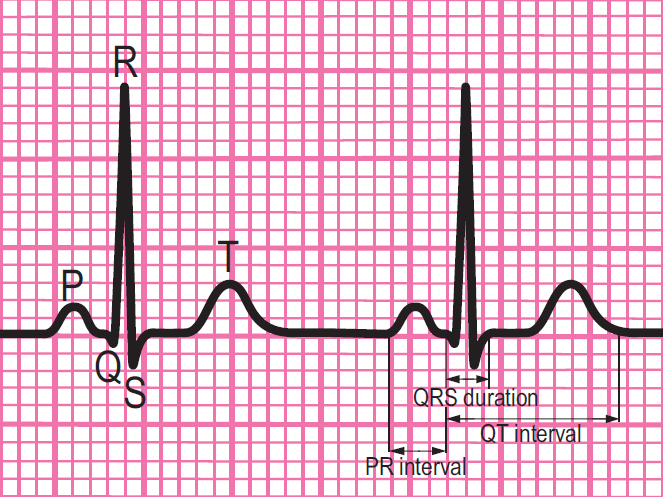
Identifying the rhythm –Sunita Kundu
No, that is not right.
Mrs Kundu’s rhythm strip shows that she has second degree AV block of Mobitz 1 (also known as Wenkebach) type.
No, that is not right.
Mrs Kundu’s rhythm strip shows that she has second degree AV block of Mobitz 1 (also known as Wenkebach) type.
No, that is not right.
Mrs Kundu’s rhythm strip shows that she has second degree AV block of Mobitz 1 (also known as Wenkebach) type.
No, that is not right.
Mrs Kundu’s rhythm strip shows that she has second degree AV block of Mobitz 1 (also known as Wenkebach) type. She has a pulse so the rhythm is not PEA.
That’s right.
Mrs Kundu’s rhythm strip shows that she has second degree AV block of Mobitz 1 (also known as Wenkebach) type.
References
See chapter 8 of the ALS manual for further explanation and examples of how to analyse cardiac rhythm from the ECG.
See chapter 11 of the ALS manual for further reading about the management of rhythm abnormalities.
Components of a normal ECG complex
- Depolarisation begins in the SA node and then spreads through the atrial myocardium
- This depolarisation is recorded on the rhythm strip as the P wave. The heart responds to this electrical stimulus byatrial contraction
- The small isoelectric segment between the P wave and QRS complex represents the delay in transmission through the AV node
- Depolarisation of the bundle of His, bundle branches and ventricular myocardium is shown on the rhythm strip as the QRS complex
- The T wave represents recovery of the resting potential (repolarisation) in the cells of the conducting system and ventricular myocardium



The 6-stage approach
1. Is there any electrical activity?
2. What is the ventricular (QRS) rate?
3. Is the QRS rhythm regular or irregular?
4. Is the QRS width normal (narrow) or broad?
Any cardiac rhythm can be described accurately and managed safely and effectively using the first four steps.
5. Is atrial activity present? (If so, what is it: Typical sinus P waves? Atrial fibrillation? Atrial flutter? Abnormal P waves?)
6. How is atrial activity related to ventricular activity? (e.g 1:1 conduction, 2:1 conduction, etc, or no relationship)






